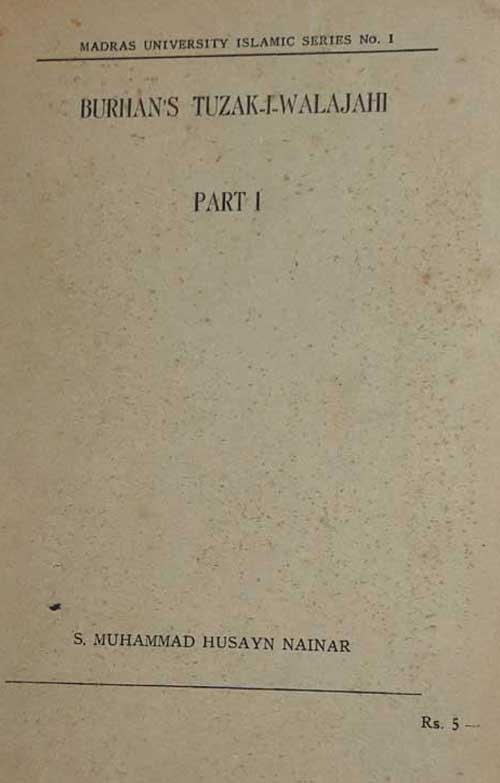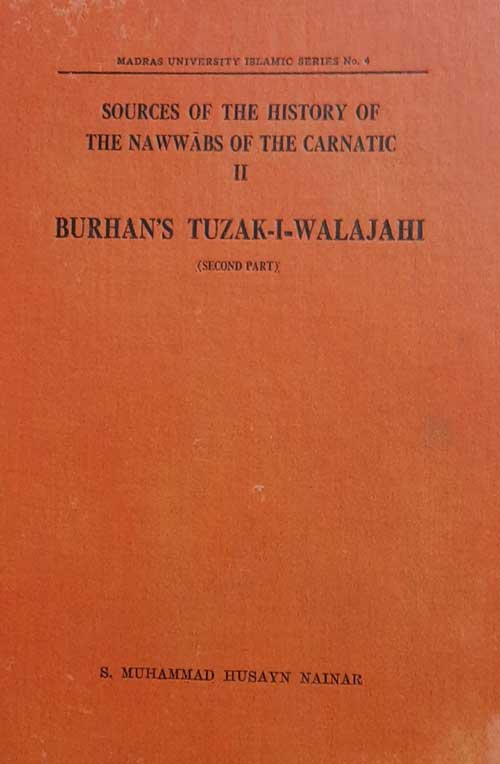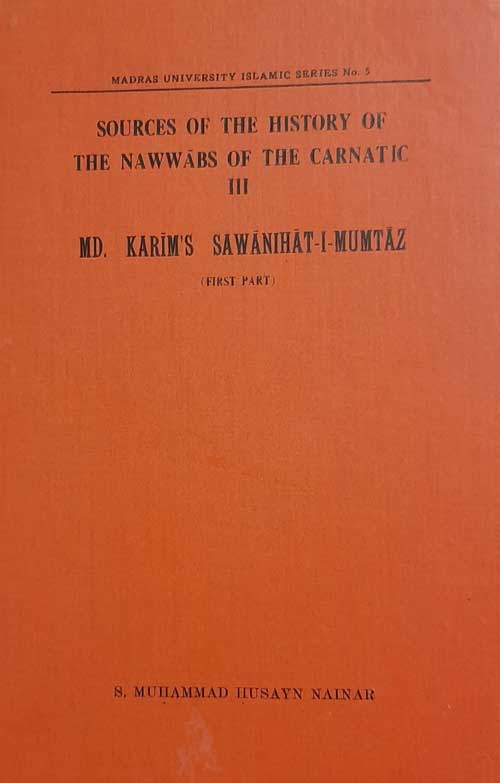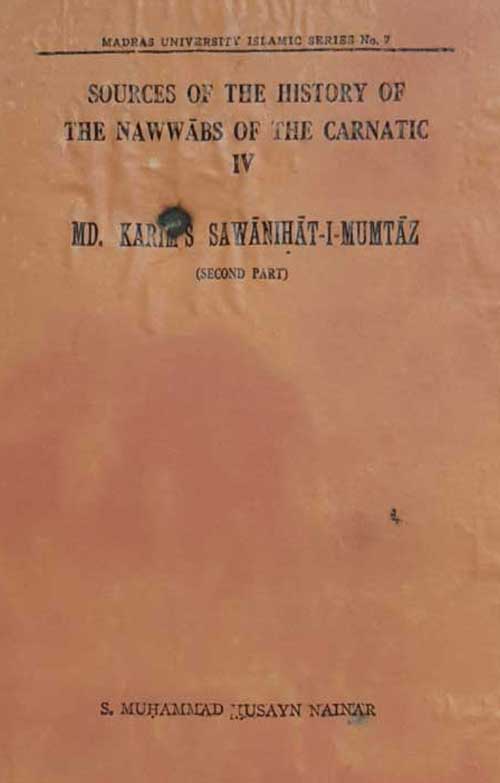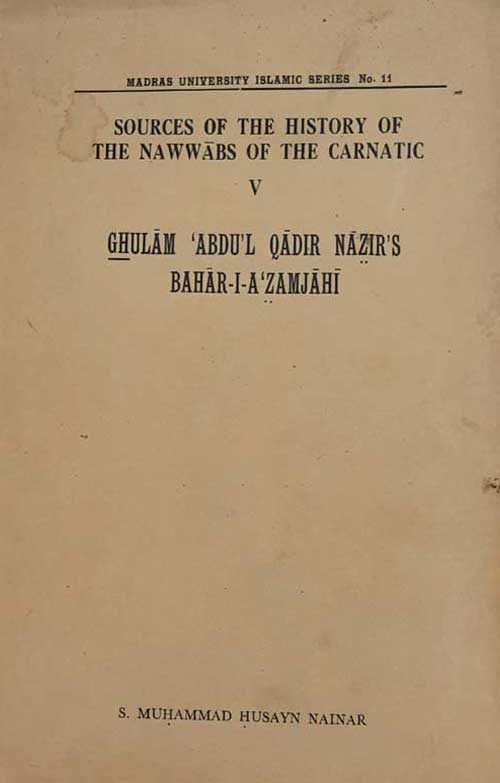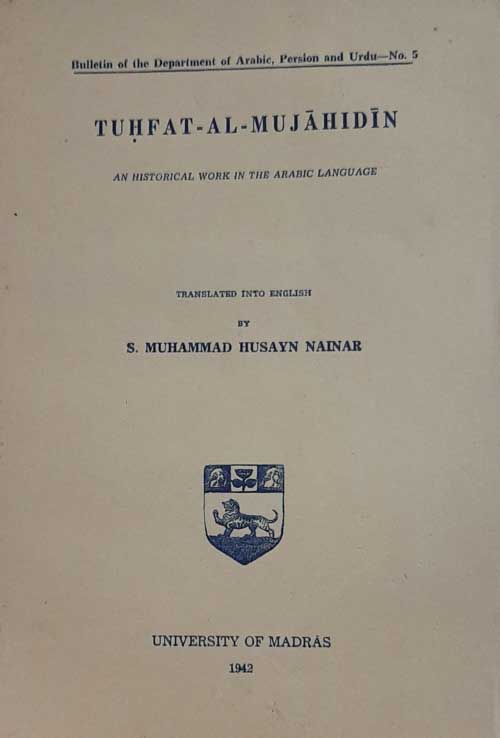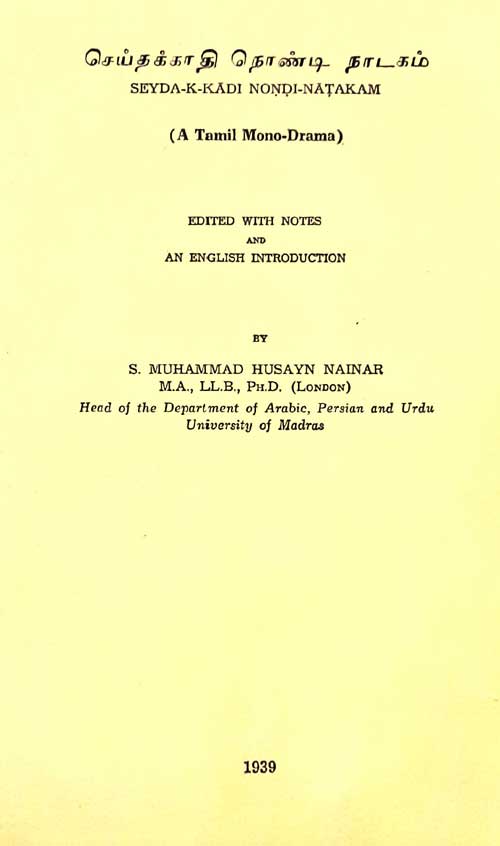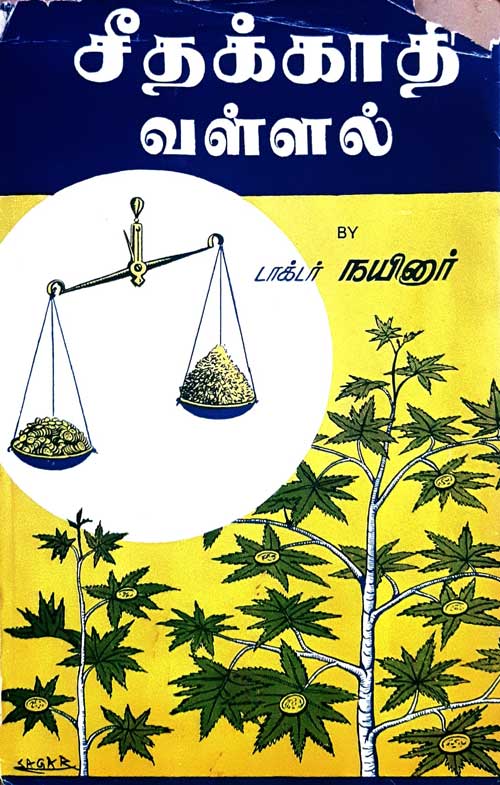SOUTH INDIAN ANTIQUITY
Arab Geographers'Knowledge of South India (English) 1942
This is based on Dr. Nainar’s thesis for the Ph.D degree at the University of London. The Arabists who had worked in detail on the Far East from Arabic sources were deterred from taking up this subject for study because they did not know the Dravidian language and culture. A large number of place names, mostly of Dravidian origin, are transliterated in Arabic in a crude and obscure form and it is very difficult to arrive at proper conclusions in regard to the identification of the place names and other facts without a familiar acquaintance with the Dravidian languages. The geographical information supplied by this work shows the nature of contact between Arabia and South India from 7th century to the 13th century AD. This book was prescribed as a text-book in many universities in India for M.A. Islamic History and Culture.
Tuhfat-al-Mujahidin (English) 1942
This historical work in the Arabic language by Zainuddin Makhdoom II, has been translated into English as it constitutes an important addition to our knowledge of the geography of southern India and the beginning of Portuguese history in India. Here again, the many South Indian customs recorded in Arabic could not be interpreted without a knowledge of Tamil, Malayalam, and South Indian culture.

